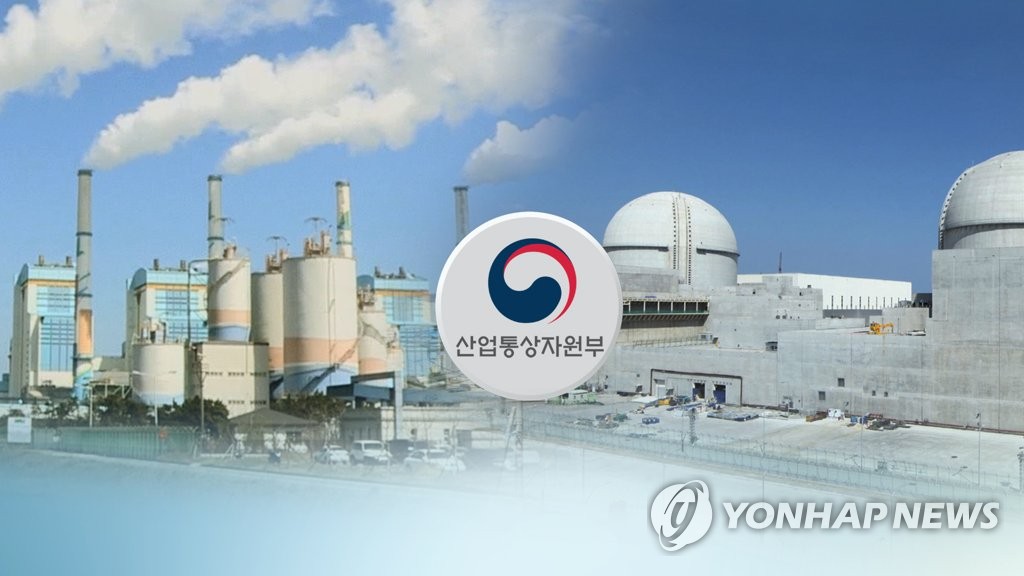Government “Improved in the next plan… Efforts to achieve carbon neutrality”
Opposition to the nuclear power plant insisted on “fee hikes, concerns about power gaps”

[연합뉴스TV 제공]
(Seoul = Yonhap News) Reporter Boram Yoon = The 9th Basic Plan for Power Supply and Demand, announced by the government on the 28th, was originally established every two years, and should have been finalized last year following 2017.
However, from this time on, as the strategic environmental impact assessment procedure in accordance with the Ministry of Environment’s Environmental Impact Assessment Act was newly added, the final draft was delayed by a year.
In addition to the delay in the plan itself, as the proportion of relatively expensive new renewable and liquefied natural gas (LNG) increased, the possibility of an increase in electricity rates increased, but it was not possible to accurately forecast the electricity rate hike. The inability to comprehensively reflect demand is pointed out as a limitation.
The opposition to the post-nuclear power plant protested that it would be difficult to achieve the carbon-neutral goal by excessively increasing LNG power generation, which emits carbon instead of nuclear power plants, as well as claiming that a power gap could be created by rapidly increasing new and renewable energies with unstable power supply and demand. Went out.
According to the 9th plan announced by the government, coal power generation based on facility capacity will decrease from 35.8GW this year to 29.0GW in 2034, and nuclear power plants will be reduced from 23.3GW to 19.4GW.
During the same period, LNG power generation will increase from 41.3GW to 58.1GW, and new and renewable energy will increase from 20.1GW to 77.8GW.
According to this plan, the composition of facilities by power source (based on rated capacity) in 2034 will be renewable (40.3%), LNG (30.6%), coal (15.0%), and nuclear power plants (10.1%).
LNG and renewable energy are more expensive than coal or nuclear power plants.
If a lot of relatively expensive power generation sources are used, electricity rates may rise, but the government was unable to come up with an accurate estimate of the increase rate due to uncertainties.
The Ministry of Trade, Industry and Energy announced at a public hearing on the 24th that “it is difficult to predict quantitatively how much electricity bills will increase at this time because various factors are complex.”
However, it is expected that the rate will not exceed the 10.9% increase (compared to 2017) by 2030, which was suggested in the 8th power plan, saying that there will be a offset effect due to the presence of both the rate increase and the decrease.
An official from the Ministry of Industry added, “In terms of equalized generation cost (LCOE), renewable energy will be cheaper than other energy sources in 2028.”
LCOE is the cost of electricity generation estimated by taking into account direct costs such as initial capital investment, capital cost, fuel cost, operation and maintenance cost, carbon price, and discount rates to compare the economics of different power sources.

[연합뉴스TV 제공]
In the energy industry, although the 4th industrial revolution, such as smart factories and smart cities, could be a major factor in the increase in power consumption, it was not specifically reflected in the power demand in the 9th plan, and it is pointed out that the power demand was set too low for this reason. Came out.
An official from the Ministry of Industry said, “We considered various methodologies to reflect the impact of the 4th Industrial Revolution, but we decided that it was difficult to quantify it right now,” he said.
Regarding the electricity demand forecast, he explained, “It was calculated by taking into account both factors, the economic growth rate and population fluctuations, which have the greatest impact on the overall electricity demand.”
While the 9th plan maintains the principle of prohibiting new and longevity of nuclear power plants, the professors’ council (Kyokai), which pursues rationalization of energy policy, nuclear civic groups such as the Nuclear People’s Solidarity, and the nuclear power union alliance, oppose the nuclear power plant. Went out.
In a statement on the 22nd, the E-Gyo-hyeop made a statement on the 22nd and called for a full review of the 9th plan, saying, “The cost estimates due to the expansion of nuclear power plants and solar power supply are missing, so the people cannot even predict the extent of the increase in electricity rates.”
The EKyo-hyup also argued that “increasing LNG power generation that emits greenhouse gases while reducing nuclear power plants without carbon emissions is contrary to the carbon neutral implementation plan in 2050.”
The Nuclear Union Solidarity urged the resumption of construction of Shin Hanul Units 3 and 4, which had been suspended. Shinhanul Units 3 and 4 were excluded from the power supply source in the 9th plan due to uncertainty.
However, the Ministry of Industry said, “If we comprehensively review the public demand for safe energy and the issue of spent nuclear fuel, it is difficult for nuclear power to become a sustainable alternative.”
Regarding the expansion of LNG power generation, he explained, “It is an inevitable decision given the fact that it emits much less carbon dioxide than coal and the need as an alternative power source due to expansion of renewable energy.”
Concern that it would be difficult to secure a site due to the excessive target for supply of new and renewable energy, the Ministry of Industry said, “In terms of the’priority supply potential’, which means land that is easy to secure water acceptance, there is little concern for environmental damage such as rooftops, abandoned roads, and railroads. The target of renewable supply is sufficiently possible.”
Unauthorized reproduction-prohibition of redistribution>
2020/12/28 17:32 sent
